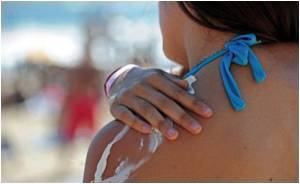Despite decades of awareness campaigns linking excessive sun exposure to skin cancer, people still think suntans are appealing and healthy.
- Sun exposure causes damage to skin cells which can lead to photo-aging and skin cancer
- Despite the awareness about exposure to the sun leading to skin cancer, almost 80% Europeans find suntans appealing
While 84% of Europeans stated they did not cover themselves all year round (79% non-Europeans), 92% were aware of the risks of skin aging caused by the sun (86% non-Europeans).
Is Healthy Suntan a Myth
“This research shows just how entrenched the ‘healthy’ suntan myth is- even in those who have already suffered sun damage or developed skin cancer,” said lead researcher Prof. Thierry Passeron. “We must drive awareness of the damage to skin cells caused by exposure to the sun, which can lead to photoaging and skin cancer. This is particularly important in Europe where sun protection appears most inadequate compared to other countries.”The survey also showed that only 56% of Europeans (compared to 64% non-Europeans) know that sun protection is helpful when it is cloudy. One in four (24%) believe it is okay to walk outside without sunscreen when they are already tanned (compared to 21% non-Europeans).
Compared to 14% of non-Europeans, only 10% of Europeans claimed to regularly or frequently use all methods of UV protection. They used sunscreen, stayed in the shade, wore a hat and wore sun protective clothing throughout the year.
UV Protection for the Skin All Year Round
“The public must also understand that they must protect their skin all year round, even during overcast weather conditions. Once sunscreen has been applied, it must be reapplied every 2 hours to ensure sufficient protection. Other measures such as wearing sunglasses, a hat, and protective clothing, and seeking shade when it is possible, are also key photoprotection habits,” commented Prof. Thierry Passeron.Recent estimates place the number of adults with skin cancer in Europe at 1.7% (or roughly 7.3 million people). Ultraviolet (UV) sun exposure is also to blame for more than 80% of the visible indications of photoaging, such as lines and wrinkles.
















